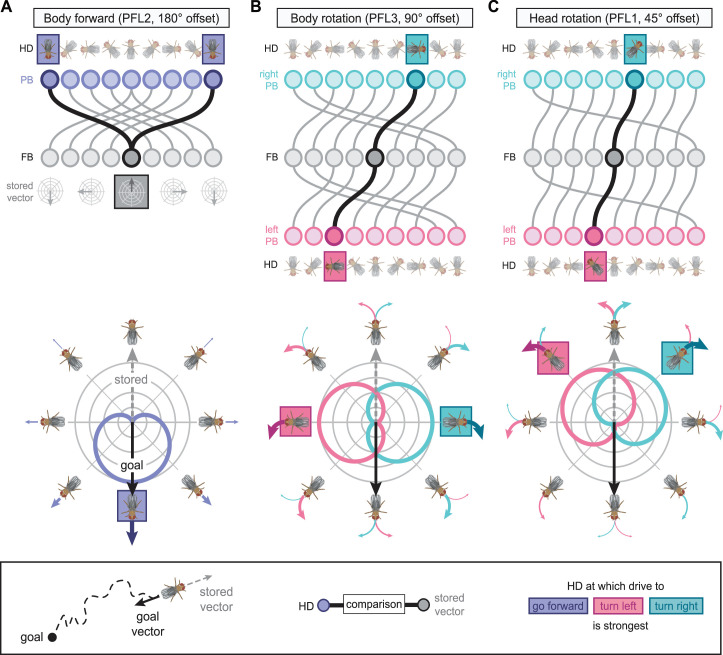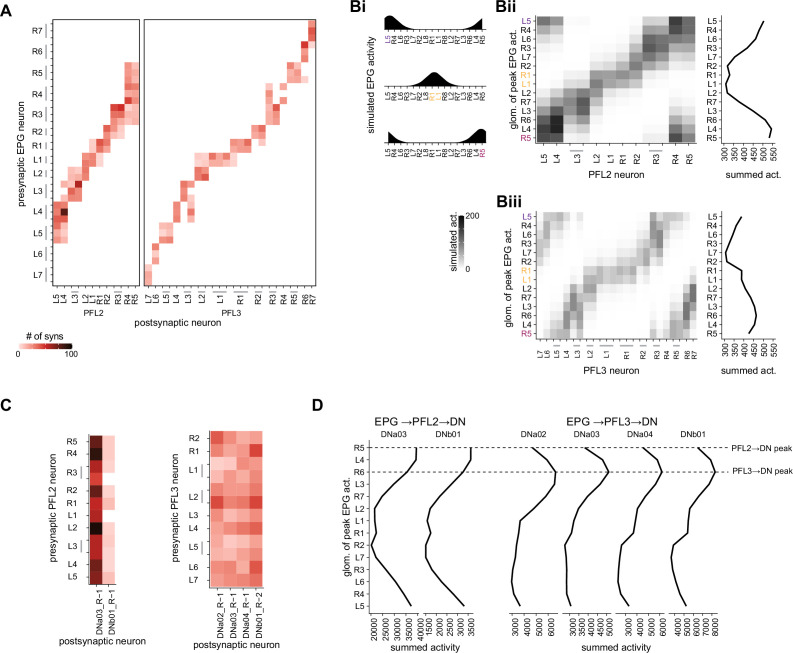Figure 73. PFL neurons could generate egocentric motor commands by comparing the fly’s allocentric head direction to an allocentric vector stored in the fan-shaped body (FB).
(A) PFL2 neurons could use their 180° protocerebral bridge (PB)-FB phase shift to generate a forward velocity signal that is largest when the fly is oriented towards the ‘goal vector,’ which in our formulation is away from the ‘stored vector’ (see bottom panel and ‘Discussion’). PFL2 neurons sample a single bump in the PB and individual PFL2 neurons project to both the left and right lateral accessory lobe (LAL), consistent with a bilateral velocity signal like forward walking. Top panel shows a schematic of the PFL2 180° phase shift between PB glomeruli (top row) and FB columns (bottom row). In this example, the stored vector points due north. To return to the goal location, PFL neurons compare the fly’s instantaneous head direction to the stored vector. The 180° phase shift ensures that PFL2 output will be largest when the fly is oriented towards the goal direction (and opposite the stored vector). (B) Similar to (A), but for the PFL3 neuron type and its 90° PB-FB phase shift. Unlike PFL2 neurons, PFL3 and PFL1 neurons (C) sample head direction bumps from the left and right PB, and individual neurons project to either the left or right LAL, consistent with motor commands with a left/right asymmetry, such as turning. In the case of PFL3 neurons, the 90° phase shift ensures that the left PFL3 population will be most active when the fly is 90° to the right of the goal direction. Similarly, the right PFL3 population will be most active when the fly is 90° to the left of the goal direction. If we assume that the right PFL3 neurons generate right turns and left PFL3 neurons generate left turns, then the motor command would act to align the fly’s heading with that of the goal direction. (C) Same as in (B), but for PFL1 neurons and their 45° PB-FB phase shift. Note that in all cases, the PB-FB phase shifts are an idealized version of those from Figure 39. The actual PFL phase shifts are not as stereotyped, since the phase shifts are continuous in anatomical space, unlike the discrete mapping schematized here.


